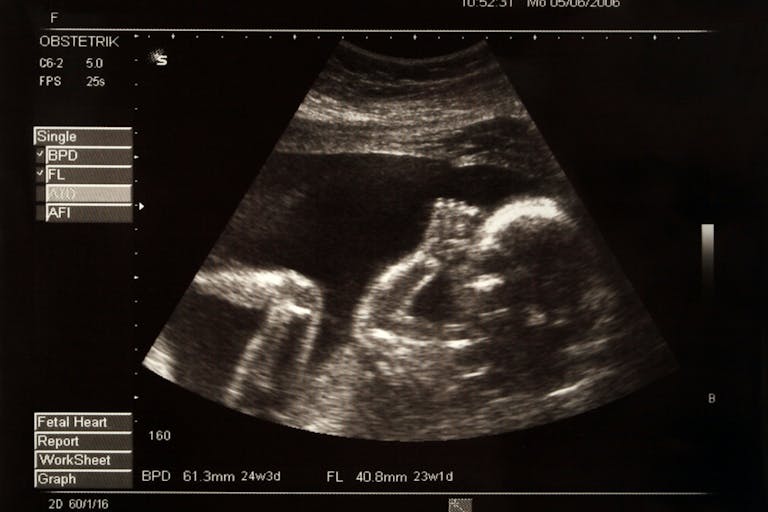
Full term 'miracle' baby born after 'unprecedented' ectopic pregnancy
Bridget Sielicki
·
Two preborn babies, two different attitudes
I have written in the past about how doctors sometimes end up fighting to save the life of one baby, while later being called upon to kill a baby of the same age in an abortion.
Abortionist Don Sloan, who has performed over 20,000 abortions, writes:
On some mornings, I leave my office, and if I turn right, I go down the hallway to the [abortion facility] and terminate. I am a destroyer of pregnancies.
If I turn left down the same hallway, I go toward the nursery and the labor and delivery unit, and take care of the myriad of complications in women who are in the throes of problem pregnancies- and I do things to help them hold on.
It’s all so schizophrenic. I have a kind of split personality.
Many medical personnel have to adjust the way they view individual pregnancies based on whether or not the woman intends to give birth.
In the story below, pro-abortion author Carole Joffe describes a training workshop for future abortion providers. They were learning how to detect and measure early pregnancies via ultrasound because that would be part of the process of screening women for the abortion pill.
The ultrasound would verify that the preborn baby was young and small enough to become a victim of a pharmaceutical abortion, as opposed to surgical abortion. The sonogram would also rule out ectopic or tubal pregnancy, which is a condition that can be fatal if not detected in time.
Two pregnant women were taking part in the workshop. One intended to have her baby, the other planned to abort. Note the way the clinicians respond to seeing these two preborbn children.
The first room the trainees went into had the woman who planned to give birth. The person speaking is the book’s author, who was present:
Article continues below
Dear Reader,
Have you ever wanted to share the miracle of human development with little ones? Live Action is proud to present the "Baby Olivia" board book, which presents the content of Live Action's "Baby Olivia" fetal development video in a fun, new format. It's perfect for helping little minds understand the complex and beautiful process of human development in the womb.
Receive our brand new Baby Olivia board book when you give a one-time gift of $30 or more (or begin a new monthly gift of $15 or more).
When I entered the first room with a group of about six trainees and two trainers, I sensed the high energy level, and there was a lot of jovial banter between the clinicians and the volunteer, including thanks for her service.
When the embryo (about five weeks’ gestation) was first located on the ultrasound, the trainer enthusiastically pointed this out to her. As different trainees took turns finding the tiny embryonic sac, others kept up a steady stream of small talk, asking how the pregnancy was going, how the patient was feeling, and so on. The group left with wishes for a successful pregnancy and birth.
The mood changed immediately when we entered the second room. People became far more subdued. The patient was graciously thanked for her volunteer service, but there was none of the buoyancy that I had just witnessed, with the first patient.
When the embryo was initially located on the screen, the trainers quietly pointed it out to the trainees and did not call it to the woman’s attention. I noted that she did not look at the screen at all for the 45 minutes the group was in the room.
The mood became somber as the trainees came face to face with the preborn baby who would soon be destroyed. The baby’s beating heart would have been clearly visible on the screen, but no one calls attention to it, and the mother refuses to look. The mother seems to want to be kept in the dark about her child. None of the medical personnel point the baby out to her, or describe it. They seem content to maintain her willful ignorance about the child’s development.
This passage shows the strange kind of “schizophrenic” behavior of medical professionals as they switch gears between wanted and unwanted babies.
In one case, the baby is enthusiastically described and shown to the mother, and the staff participates in the woman’s joy at her preborn baby’s development. They congratulate the mother on her future plans and share in her happiness.
In the other room, the medical personnel quietly talk among themselves, careful not to say anything that might change the woman’s mind. The babies are at the same level of development and both healthy, and there is essentially no difference between them. It is too early to tell the gender of the babies, but in both cases, their beating hearts would’ve been visible on the screen.
Yet medical staff would go to great lengths to save the first baby, while being willing to destroy the second. And if the two women changed their minds and switched places, with the first women deciding she wanted to abort instead of carry to term, and the second suddenly deciding not to abort, it would then be the opposite – baby one would be worthless and baby two would be valuable.
Preborn children are judged to be valuable or worthless based on the mother’s decision to give birth or abort. It is the mother’s opinion that makes one child a baby and the other just a “bit of uterine material” or a “product of conception.” Medical staff are left scrambling to accede to her wishes.
Source: Carole Joffe Dispatches from the Abortion Wars: the Costs of Fanaticism to Doctors, Patients, and the Rest of Us (Boston, Massachusetts: Beacon Press, 2009) 123 – 124
Live Action News is pro-life news and commentary from a pro-life perspective.
Contact editor@liveaction.org for questions, corrections, or if you are seeking permission to reprint any Live Action News content.
Guest Articles: To submit a guest article to Live Action News, email editor@liveaction.org with an attached Word document of 800-1000 words. Please also attach any photos relevant to your submission if applicable. If your submission is accepted for publication, you will be notified within three weeks. Guest articles are not compensated (see our Open License Agreement). Thank you for your interest in Live Action News!

Bridget Sielicki
·
Human Rights
Carole Novielli
·
International
Angeline Tan
·
Human Rights
Nancy Flanders
·
Human Rights
Angeline Tan
·
Human Rights
Angeline Tan
·
Guest Column
Sarah Terzo
·
Abortion Pill
Sarah Terzo
·
Guest Column
Sarah Terzo
·
Guest Column
Sarah Terzo
·
Guest Column
Sarah Terzo
·